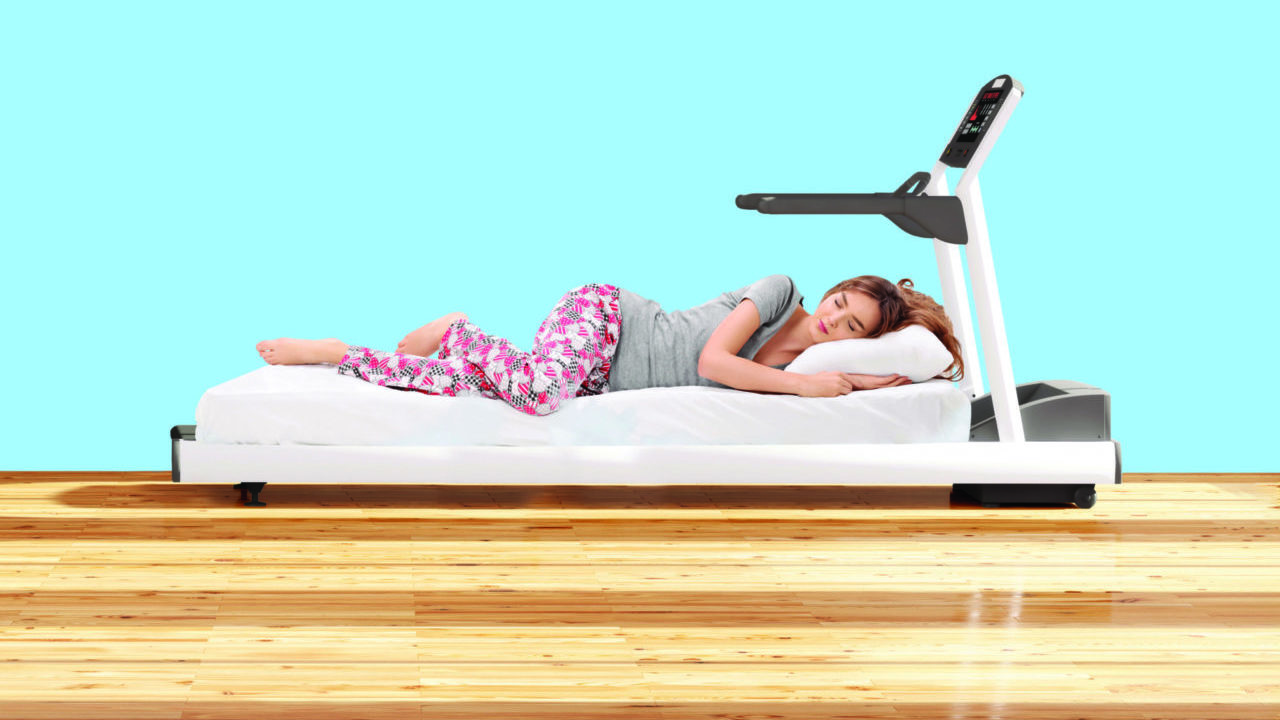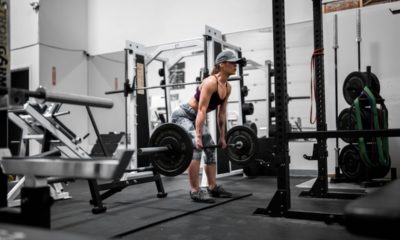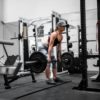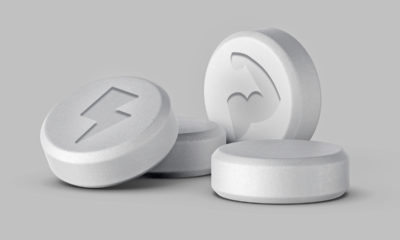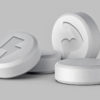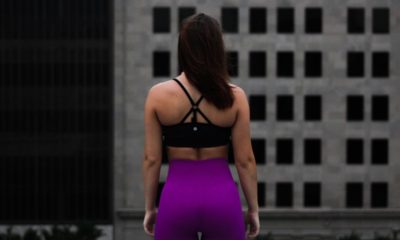Build Muscle
Rest Easy
If you meticulously plan your gym time, ensuring you squeeze in as much time as you can around your other social, work and family commitments, that’s all well and good, but you should spend as much time focused on rest time too. High-level performance can only really be achieved if you give your body the opportunity to build the muscle you’re working towards.
Putting the time in at the gym is certainly an important – essential – step in getting a stronger fitter body, obviously – but it’s when you rest, and >how you rest, that determines how you build the muscle you want.
Overtraining and injury is the obvious downside of lack of rest. We’ve all suffered from an injury after going at it full pelt when really we should have taken a day or even two off. But the relationship between rest and muscle growth goes beyond simply avoiding injury. This is the time when muscle protein synthesis occurs. Without proper rest, levels of energy-producing hormones like epinephrine and cortisol don’t get a chance to drop, and that can hinder your ability to create new muscle fibers.
When you’re lifting weights or doing resistance training in some other way, your muscles get fatigued (well, at least that’s the idea) – and this is because you’ve applied mechanical and/or metabolic stress. Mechanical stress is when your muscles go through a series or set of moves that ‘damage’ them. This is done via contracting the muscles. When your muscles meet resistance and you keep tasking them to work through it, you’ll experience mechanical stress. Metabolic stress is when your muscles have to produce the energy required to complete the move you’re asking of them. Both of these stressors are what help you build lean strong muscles.
Woman’s Recovery Plan
Once you’ve stressed your muscles via metabolic and mechanical stress, you’re dealing with post-exercise recovery. And skeletal muscle damage, decreased substrates and metabolic by-products are the important elements of this. The way women’s bodies go through these processes differ to men’s, and it’s important to be aware of this. Women have more slow twitch muscle fibers (type 1) compared to men, and these are aerobic-type muscles meaning they help carry oxygen. Women’s muscles also have more densely packed capillaries, which may allow blood to circulate more quickly. What’s interesting about slow twitch fibers is that they can’t generate as much force as fast twitch muscle fibers, but they can sustain output for longer. This means that the recovery process for a woman who has undergone the same training routine as a similarly sized man should still be adjusted – she’ll have done more muscle damage if the workout required force, and her slow twitch fiber use may mean that she’s used up more glucose in her muscles than her male counterpart.
In research undertaken by Oklahoma State University, USA, men and women were matched for strength and their fatigue and recover rates assessed. Women were significantly slower to reach fatigue levels and experienced faster recovery than the men. This supports the idea that women’s slow twitch muscle fibers help speed recovery.
There are other differences that impact your recovery process. Women use more fat as an energy source during exercise (compared to men). This is why women are less likely to fatigue as quickly as men, who are matched for strength and fitness. This in turn means that when men workout they burn more glucose, which promotes lactate accumulation. That in turn leads to longer recovery times. So the difference in fatigue onset and recovery could be down to how women’s bodies metabolize fat and glucose compared to men during exercise.
Estrogen also plays a part in recovery and as you’re likely aware, women have higher levels of the so-called female hormone than men. Estrogen helps heal muscles after a workout, protecting you against muscle damage and aiding protein-processing too.
Action Plan
So what does all this mean for your recovery times? It means you can adjust your workout to higher volume without needing more recovery time (unlike a man). It also means you should tailor your workouts and recovery times specifically to your needs, not those you might read in a men’s workout guide. For example, a workout might suggest doing 12 reps at high intensity, no more. But as a woman, doing that might actually be limiting your strength growth potential. You may be able to do sets of 15 to reach a comparable level of fatigue and take shorter rest periods between sets. The best way to find out what’s right for you is to experiment and not to take the figures as gospel – if a workout guide suggests a certain number of reps and seconds or minutes of rest between, don’t assume it’s correct for you.
So next time you’re working out consider adjusting your rest breaks and see how it feels. It could be they can be shortened, giving you more time to lift, or you may find that a longer period is more beneficial. Research published in >The Journal of Strength and Conditioning Research found longer rest periods gave study participants greater muscle thickness and muscle strength. Worth noting, however, is that this study was on men. While there simply isn’t the same level of in-depth research on women’s muscle building, you’ll have to rely on recognizing what works for you on an individual level, armed with the knowledge that you’re likely to respond to differently than a man.
If that weren’t enough of a reason to give it a rest, there are so many more reasons why you need to take a break. Not allowing your body time to rest between workouts leads to chronic inflammation, high blood pressure, decreased performance and immunity, and sleep disturbances. That, you might be thinking smugly, wouldn’t affect me. Perhaps you always give your upper or lower body a break by focusing on one or other muscle group on alternate days. But guess what? That’s not enough. Delayed-onset muscle soreness peaks between 24 and 72 hours after a workout – if you’re no good at math, that’s between one and three days after a workout. What’s more, the more intensive your workout the longer rest you may need. And resting one part of your body while you tax another isn’t the same as rest – because your body is then simply focused on another part of your body that needs healing. Some professional athletes take a week or even several weeks to fully rest after a major sporting event or season.
But while that’s when you feel the soreness, it doesn’t mean it’s the only time you need to rest. Aside from resting between sets, you’ll also need rest two to four hours immediately after exercise, and then around 48-72 hours after.
Active Recovery
Rest doesn’t mean lying flat on your back in bed or draped over the sofa, it simply means ‘taking it easy’. Active recovery is actually better than completely static recovery, unless you’ve been specifically told not to move a muscle. So long walks, swimming, bike rides and so on are ideal for those rest days.
Rest can also be proactive – massage and stretching are great ways to ‘rest’ your body while encouraging and boosting restoration. While some research has found that cold-water immersion can help reduce inflammation and soreness, other research suggests it isn’t very effective, and let’s face it, it’s not exactly pleasant! You can’t go wrong with sleep, however, it’s the one type of rest guaranteed to work and of course the most important.
Recovery Intensity
The quicker you can recover, however, the quicker you’ll grow stronger and it’s this that drives some people to go back to working out when they should be resting. Thankfully, there are things you can do to speed up the recovery process. You can invest in certain equipment to help you through the rest period. Compression clothing has been shown to be beneficial for example, helping to reduce markers of muscle damage such as creatine kinase, and also helping to improve circulation which then allows the body to heal more quickly and efficiently than it would otherwise.
Vibration platforms have also become popular – these work by basically moving your body, which increases blood circulation. That can help move waste products out of your blood stream. But be aware that your muscles are also undergoing stress as they’re moved around by the vibrations – so this should be a form of active recovery, rather than completely passive.
And then there’s the good old foam roller. These are great for reducing muscle stiffness. If you don’t work on a tight muscle after a workout, you’ll find that the pain can become worse. This is because collagen builds up between layers of muscle and makes everything feel even tighter. Massaging your muscles with hands or a foam roller or similar, helps to break up this collagen and keep your muscle looser so potential for pain is reduced.
Depending on your workout, your personal physiology and even the time of year, you’ll need to adjust the recovery period. Working your lower body to the point of fatigue requires a different level of recovery to working your core, for example. Bigger muscle groups will require longer recovery periods for obvious reasons. Similarly, a tall woman with healthy weight, for example, might want to take extra care after doing back and shoulder exercises compared to a shorter woman of healthy weight, because her unique physical make-up means she’s most likely to suffer a back injury from lack of rest or over-use. Understand your body, its weaker and stronger elements, and adjust the recovery period and also the type of recovery method accordingly.
Finally, be aware that external factors such as warmth and sunshine can make a big difference to your recovery period too. Your muscles are far more likely to relax and recover in warm temperatures than frigid wintry ones. All these factors should be taken into account when you plan your R&R. And finally, enjoy it! Focus on the fact that it’s exactly when you’re >not sweating it out at the gym that your muscles are actually growing… and relax.
WORDS: Siski Green
Sources:
Women recover quicker than men: https://www.ncbi.nlm.nih.gov/pubmed/10606825?access_num=10606825&link_type=MED&dopt=Abstract


